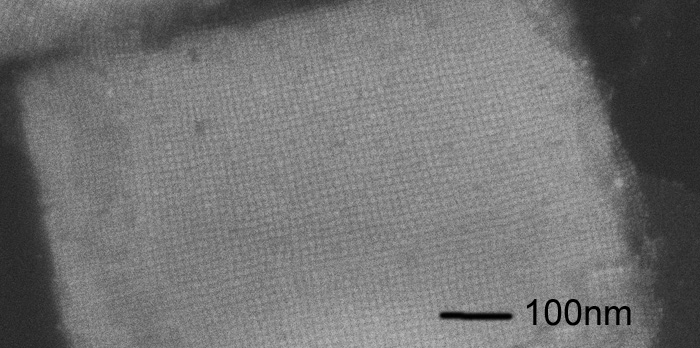 Back to Open Positions & Projects
Back to Open Positions & Projects

Nanocrystal films for future solar cells
- Supervisor: Peter Schall
- Project Type: Bachelor / Master Project
- Goal: The bottom-up design of highly tunable novel materials for efficient energy conversion
- Info: Send an email to: P. Schall
Nanocrystals offer fascinating properties and application perspectives for new photovoltaic devices: due to their small size, quantum effects become important, leading to discretized energy levels (-> electron in a box problem) just like atoms have. The advantage of nanocrystals is that we can set the energy levels by tuning their size, and we can assemble them into new “supersolids”, which which due to overlap of the energy levels show a new band structure, just like the band structure of regular solids. Because of the tunability of energy levels and electronic states, this offers tremendous potential for research and optoelectronic applications. The electronic states can be tailored by the strength of the nanocrystal interaction within the assembled “supersolid”, which is in principle determined by the QD distance. So far, however, this has remained a largely theoretical concept, and experimental realization of such tailored “quantum solids” has remained a grand challenge.
Here we take advantage of recently synthesized cubic all-inorganic perovskite QDs to demonstrate the full transition from a single dot of a core-shell structure, via weakly and strongly coupled quantum solids to a fully joint solid thin semiconductor layer, where due to fusion of the nanocrystals, the quantum confinement vanishes. These novel perovskite NCs offer the great advantage that (i) their cubic shape boosts self-assembly into highly-ordered two-dimensional square lattices enhancing mutual coupling, and (ii) they merge naturally by a diffusive mechanism. The envisaged core-shell structure will open new routes to:
- Tailor the inter-nanocrystal separation, and thus the coupling within the square superlattice.
- Realize continuous in-situ tuning of electronic states through in-situ expansion of the nanocrystal core at the expense of the shell.
The outcome will be the bottom-up design of highly tunable novel materials for efficient energy conversion
